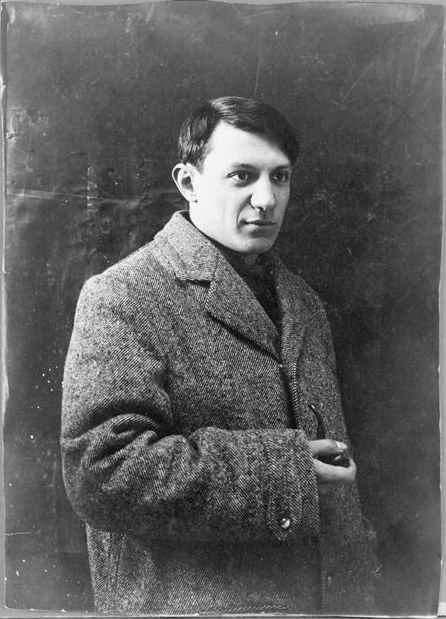Pablo Picasso (1881-1973) was a Spanish painter, sculptor, and printmaker who spent much of his life in France. He is considered one of the most influential artists of the 20th century, best known for co-founding Cubism and for his diverse artistic styles. Picasso also invented constructed sculpture and co-invented collage. His iconic works include the proto-Cubist painting *Les Demoiselles d'Avignon* and *Guernica*, a powerful anti-war depiction of the bombing of Guernica during the Spanish Civil War. Picasso's impact on modern art remains significant.
1900: Modernist Period
Around 1900, Picasso entered his Modernist period, influenced by artists like Rossetti, Toulouse-Lautrec, and El Greco, leading to a personal version of modernism in his works.
1900: First Trip to Paris
In 1900, Picasso made his first trip to Paris, where he met Max Jacob, who helped him learn the language and literature. They shared an apartment during times of poverty.
March 1901: Publication of Arte Joven
In March 1901, Picasso and Francisco de Asís Soler published the first issue of the magazine Arte Joven in Madrid, featuring Picasso's illustrations.
1901: Start of the Blue Period
In 1901, Picasso's Blue Period began, characterized by sombre paintings in shades of blue and blue-green.
1901: Reminder of the 1899-1901 Period
In 1901, Picasso's work from this period is reminiscent of the generally upbeat and optimistic mood of paintings in the Rose Period (1904-1906).
1903: La Vie Painting
In 1903, Picasso painted La Vie, a gloomy allegorical painting, as a posthumous portrait of his friend Carles Casagemas.
1903: The Blindman's Meal and Celestina
In 1903, Picasso painted The Blindman's Meal and the portrait of Celestina, both reflecting the theme of blindness prevalent in his Blue Period works.
1904: Start of the Rose Period and Meeting Fernande Olivier
In 1904, Picasso began his Rose Period and met Fernande Olivier in Paris, who became his mistress and influenced his paintings.
1904: The Frugal Repast
In 1904, Picasso created The Frugal Repast, an etching depicting a blind man and a sighted woman at a bare table, reflecting the themes of blindness and poverty during his Blue Period.
1904: Rose Period Start
In 1904, Picasso entered the Rose Period, which featured a lighter tone with orange and pink colors, often depicting circus people and harlequins.
1904: End of the Blue Period
In 1904, Picasso's Blue Period ended, marking a transition to new artistic styles and themes.
1905: Patronage from the Steins and Meeting Henri Matisse
In 1905, Picasso became a favorite of American art collectors Leo and Gertrude Stein. He painted a portrait of Gertrude Stein. He met Henri Matisse at one of her gatherings.
1905: Transition into the "Rose Period"
In 1905, the reappearance of an acrobats theme in Picasso's work signaled the end of his "Blue Period" and marked the transition into his "Rose Period". This transition has been incorrectly attributed to the presence of Fernande Olivier in his life. This marked a change in his artistic style, moving away from the somber tones of his earlier work.
1906: Rose Period
In 1906, Picasso was in the Rose Period, characterized by a lighter tone utilizing orange and pink colours and featuring many circus people, acrobats and harlequins.
1906: Inspiration from Henri Matisse
In 1906, Picasso was motivated by Henri Matisse's Fauvist work, leading him to explore more radical styles and beginning a rivalry between the two artists.
June 1907: Inspiration from African Artifacts
In June 1907, Picasso was powerfully impressed by African artifacts at the ethnographic museum at Palais du Trocadéro, which influenced his painting Les Demoiselles d'Avignon.
1907: Start of the African-influenced Period
In 1907, Picasso began his African-influenced Period, showing the influence of African artifacts on his art.
1907: Les Demoiselles d'Avignon
In 1907, Picasso created Les Demoiselles d'Avignon, a proto-Cubist work that became one of his most famous pieces.
1907: Joins Daniel-Henry Kahnweiler's Art Gallery
In 1907, Picasso joined an art gallery in Paris opened by Daniel-Henry Kahnweiler, who became a premier art dealer and champion of Cubism.
1907: Nude with Raised Arms
In 1907, Picasso painted Nude with Raised Arms, during his African-influenced Period.
1908: Three Women Painting
In 1908, Picasso created Three Women, contributing to his African-influenced Period.
1909: Abandoning Modelling
From 1909 to 1928 Picasso abandoned modelling and instead made sculptural constructions using diverse materials.
1909: Creation of Femme Assise
In 1909, Pablo Picasso created the painting 'Femme Assise', which would later sell for a record price at auction in June 2016.
1909: Beginning of Analytic Cubism
In 1909, Picasso began Analytic Cubism with Georges Braque, using monochrome colors to analyze objects in terms of their shapes.
1909: Analytic Cubism Development
In 1909, Picasso developed Analytic Cubism with Georges Braque, using monochrome colors to analyze objects in terms of their shapes.
1909: African-influenced Period
In 1909, Picasso was in the African-influenced Period, which began with his painting Les Demoiselles d'Avignon.
1909: Emotional Containment and Sublimation
Since 1909, Picasso's work largely contained or sublimated violence, psychic fears, and eroticism.
1911: Questioning about Mona Lisa Theft
In 1911, Picasso was arrested and questioned about the theft of the Mona Lisa from the Louvre, due to his association with Apollinaire.
1912: Guitar Sculpture Construction
In 1912, Picasso created Guitar, a relief construction made of sheet metal and wire. It is considered a "three-dimensional planar counterpart of Cubist painting".
1912: Creation of Still Life with Chair Caning
In 1912, Picasso created Still Life with Chair Caning, marking the first cubist collage and assemblage during Synthetic Cubism.
1912: Analytic Cubism period end
In 1912, Picasso transitioned away from Analytic Cubism, marking the beginning of a new phase in his artistic style.
1913: Death of José Ruiz y Blasco
In 1913, Picasso's father, José Ruiz y Blasco, a painter and art professor, passed away.
August 1914: World War I and Relocation
In August 1914, at the outbreak of World War I, Picasso was living in Avignon. Many of his artist friends were mobilized for the war effort.
1915: Geometric and Minimalist Cubist Objects
Between 1915 and 1917, Picasso began a series of paintings depicting highly geometric and minimalist Cubist objects, consisting of either a pipe, a guitar or a glass.
1915: Death of Eva Gouel
In 1915, Picasso was devastated by the premature death of Marcelle Humbert (Eva Gouel) from illness at the age of 30.
1916: Friendship Renewal
During the spring of 1916, Apollinaire returned from the front wounded, and Picasso renewed their friendship but began to frequent new social circles.
1916: Exhibition of Les Demoiselles d'Avignon
In 1916, Picasso exhibited Les Demoiselles d'Avignon publicly for the first time, several years after its creation.
February 1917: First Trip to Italy and Neoclassical Style
In February 1917, Picasso made his first trip to Italy and began producing work in a neoclassical style following World War I, mirroring a "return to order" trend among European artists.
1917: Geometric and Minimalist Cubist Objects
Between 1915 and 1917, Picasso began a series of paintings depicting highly geometric and minimalist Cubist objects, consisting of either a pipe, a guitar or a glass.
1917: Paintings of Woman with a Mantilla, Figure in an Armchair, and Harlequin
In 1917, Picasso's paintings included the pointillist Woman with a Mantilla, the Cubist Figure in an Armchair, and the naturalistic Harlequin, showcasing his stylistic versatility.
1918: Marriage to Olga Khokhlova
In 1918, Picasso married Olga Khokhlova, a ballet dancer. This marked a significant relationship in Picasso's life, influencing his personal life and artistic style.
1919: Drawings from Postcards and Photographs
In 1919, Picasso made a number of drawings from postcards and photographs, reflecting his interest in the stylistic conventions and static character of posed photographs.
1919: Synthetic Cubism
In 1919, Picasso was in the Synthetic cubism (1912–1919) period, in which cut paper fragments were pasted into compositions.
1920: Introduction to High Society and Collaboration on Pulcinella
In 1920, Khokhlova introduced Picasso to the life of the rich in Paris, including high society and formal dinner parties. During this year, Picasso also collaborated with Igor Stravinsky on Pulcinella, using the opportunity to make drawings of the composer.
1921: Neoclassical and Cubist Paintings
In 1921, Picasso simultaneously painted several large neoclassical paintings and two versions of the Cubist composition Three Musicians, demonstrating his ability to work in multiple styles.
1921: Summer in Fontainebleau and Painting Three Women at the Spring and Three Musicians
In the summer of 1921, Picasso, Khokhlova, and their son Paulo stayed in Fontainebleau, France. During this time, Picasso painted Three Women at the Spring and Three Musicians in a garage used as a studio.
1923: Picasso's Statement on Artistic Style
In an interview published in 1923, Picasso stated that the different manners he used in his art were not an evolution but rather a reflection of the subjects he wanted to express, adopting different ways of expression as needed.
1924: Friendship between Picasso and Christian Zervos
In 1924, Picasso and Christian Zervos became friends, which led to Zervos undertaking the compilation of the catalogue raisonné of Picasso's complete works from 1932 to 1978.
1925: Declared "One of Ours" by André Breton and Cubist Works at Surrealist Exhibition
In 1925, André Breton declared Picasso "one of ours" in his article. Les Demoiselles was reproduced in Europe for the first time, and Picasso exhibited Cubist works at the first Surrealist group exhibition, while developing new imagery to express himself emotionally.
1927: Meeting Marie-Thérèse Walter and Beginning an Affair
In 1927, Picasso met 17-year-old Marie-Thérèse Walter and began a long-standing affair with her. She became his muse, and he later fathered a daughter named Maya with her.
1928: Abandoning Modelling
From 1909 to 1928 Picasso abandoned modelling and instead made sculptural constructions using diverse materials.
1932: Zervos constitutes catalogue raisonné of Picasso's complete works
From 1932, Christian Zervos began compiling the catalogue raisonné of Picasso's complete works, with Picasso becoming a friend in 1924. The catalogue spanned until 1978, documenting Picasso's artistic output over several decades.
1932: Creation of 'Nude, Green Leaves and Bust'
In 1932, Picasso created 'Nude, Green Leaves and Bust', depicting his mistress Marie-Thérèse Walter. The painting sold for US$106.5 million in May 2010.
1932: Publication of the first volume of Picasso's catalogue raisonné
In 1932, the first volume of the catalogue raisonné of Picasso's work, 'Works from 1895 to 1906', was published by Christian Zervos. This endeavor led to Zervos' financial hardship, forcing him to sell art to avoid bankruptcy.
1935: Start of Poetry Writing
From 1935 to 1959, Picasso wrote more than 300 poems as an alternative outlet.
1935: Divorce Proceedings Initiated
In 1935, Picasso began divorce proceedings with Olga Khokhlova. However, Olga refused to divorce, leading to a legal separation later on.
1935: Birth of Daughter Maya and Secret Residence
In 1935, Picasso's mistress, Marie-Thérèse Walter, gave birth to their daughter Maya. Picasso secretly housed them in an apartment at 44 rue de La Boétie in Paris, across from his residence with his wife Olga.
May 1936: Writing Poetry
Around this time, Picasso wrote poetry as an alternative outlet, with poems often titled with the date and location of their writing, such as "Paris 16 May 1936".
1936: Appointment as Director of the Prado
In 1936, at the start of the Spanish Civil War, Picasso was appointed as the "director of the Prado, albeit in absentia" by the Republicans. He took his duties seriously, providing funds to evacuate the museum's collection to Geneva.
July 1937: Exhibition of Guernica at the Paris International Exposition
In July 1937, Guernica was exhibited at the Spanish Pavilion at the Paris International Exposition and later became the centerpiece of a touring exhibition featuring works by Picasso, Matisse, Braque, and Henri Laurens.
1937: Marie-Thèrése and Maya moved to Le Tremblay-sur-Mauldre
In 1937, Marie-Thèrése Walter and her daughter Maya were moved to Le Tremblay-sur-Mauldre. This move separated them further from Picasso's primary residence.
1937: Picasso Paints Femme au Béret et à la Robe Quadrillée
In 1937, Pablo Picasso painted 'Femme au Béret et à la Robe Quadrillée', a portrait of Marie-Thérèse Walter, which was sold for £49.8m at Sotheby's in London in March 2018.
1937: Creation of 'The Dream and Lie of Franco'
In 1937, Picasso created 'The Dream and Lie of Franco' as an overtly political work expressing anger and condemnation of Francisco Franco and fascists, meant to be sold as postcards for fundraising for the Spanish Republican cause.
1937: Creation of Guernica
In 1937, Picasso created Guernica, a large narrative painting and one of his few works on such a scale.
1937: Guernica Painting
In 1937, Picasso created the anti-war painting Guernica, portraying the bombing of Guernica during the Spanish Civil War.
1939: Picasso Paints Femme assise, robe bleu
In 1939, Pablo Picasso painted 'Femme assise, robe bleu', a portrait that was later misappropriated during the early years of WWII and sold for $45 million at auction in May 2017.
1939: Retrospective at the Museum of Modern Art
In 1939, on the occasion of Picasso's retrospective at New York's Museum of Modern Art, Life magazine acknowledged his dominance in modern European art, with opinions divided on whether he was a corrupting influence or the greatest artist alive.
1940: French Citizenship Refusal
In 1940, Picasso applied for French citizenship but was denied due to his "extremist ideas evolving towards communism".
1940: Mixed Critical Reception of Retrospective
In 1940, following the major retrospective of his work, Picasso faced a surprisingly ambivalent critical reception, with journalists expressing disturbance over his "multiplicity of styles" and describing him as "wayward and even malicious."
1941: Legal Separation from Olga Khokhlova
In 1941, Picasso and Olga Khokhlova legally separated, although they remained married until her death. This marked the formal end of their cohabitation, though legal ties persisted.
1941: Desire Caught by the Tail
In 1941, Picasso wrote "Desire Caught by the Tail".
1942: Painting Still Life with Guitar
In 1942, Picasso continued to paint in his studio, producing works such as the Still Life with Guitar.
1944: Producing The Charnel House and Continuing Bronze Casting
In 1944, Picasso continued to paint in his studio, producing works such as The Charnel House (painted between 1944 and 1948). Although bronze casting was outlawed by the Germans in Paris, Picasso continued using bronze smuggled to him by the French Resistance.
1944: Joining the French Communist Party
In 1944, Picasso joined the French Communist Party. This decision aligned him with many continental intellectuals and artists of the time.
1944: Beginning Relationship with Françoise Gilot
In 1944, after the liberation of Paris, Picasso, then 63 years old, began a romantic relationship with a young art student named Françoise Gilot, who was 40 years younger than him. He grew tired of his mistress Dora Maar and began living with Gilot.
1945: Interview with Jerome Seckler
In 1945, Picasso stated in an interview with Jerome Seckler, "I am a Communist and my painting is Communist painting."
1947: Birth of Claude Picasso
In 1947, Picasso and Françoise Gilot had their first child, Claude Picasso.
1948: Attendance at World Congress of Intellectuals
In 1948, Picasso attended the World Congress of Intellectuals in Defense of Peace in Poland. His attendance reflected his commitment to the communist ideology and his engagement in international political events.
January 1949: Creation of 'Dove'
On 9 January 1949, Picasso created 'Dove', a black and white lithograph that became an iconographic image known as 'The dove of peace'. It was used as a poster for the 1949 World Peace Council.
1949: Birth of Paloma Picasso
In 1949, Picasso and Françoise Gilot had their second child, Paloma Picasso.
1949: Exhibition at the Philadelphia Museum of Art
In mid-1949, Picasso was one of 250 sculptors who exhibited in the 3rd Sculpture International held at the Philadelphia Museum of Art.
1949: The Four Little Girls
Picasso wrote "The Four Little Girls" in 1949.
1950: Receiving the Stalin Peace Prize
In 1950, Picasso received the Stalin Peace Prize from the Soviet government. This award recognized his contributions to promoting peace from a communist perspective.
1951: Affair with Geneviève Laporte
In 1951, while still involved with Françoise Gilot, Picasso had a six-week affair with Geneviève Laporte, who was four years younger than Gilot.
1952: Meeting Jacqueline Roque
In 1952, Picasso met Jacqueline Roque, who worked at the Madoura Pottery in Vallauris, where he made and painted ceramics. She became his lover.
1953: Gilot leaves Picasso
In 1953, Françoise Gilot left Picasso, taking their children with her, due to his abusive behavior and infidelities, as described in her 1964 book 'Life with Picasso'. This event led to a strained relationship between Picasso and his children.
1953: Party Criticism for Stalin Portrait
In 1953, Picasso faced criticism from the Communist Party for his portrait of Joseph Stalin, which was deemed insufficiently realistic. Despite this, he remained a loyal member of the party.
1955: Death of Olga Khokhlova
In 1955, Olga Khokhlova, Picasso's first wife, passed away. They had been legally separated since 1941, but remained married until her death.
1955: Helping Make Le Mystère Picasso
In 1955, Picasso helped make the film Le Mystère Picasso (The Mystery of Picasso), directed by Henri-Georges Clouzot.
1958: Acquisition of the Château of Vauvenargues
In 1958, Picasso acquired the Château of Vauvenargues near Aix-en-Provence.
1959: Occupation of Château of Vauvenargues
Between 1959 and 1961, Picasso and Jacqueline occupied the Château of Vauvenargues.
1959: The Burial of the Count of Orgaz
Picasso wrote works such as The Burial of the Count of Orgaz in 1959.
1960: Cameo in Testament of Orpheus
In 1960, Picasso made a cameo appearance as himself in Jean Cocteau's Testament of Orpheus.
December 1961: Recognition of Paternity and Marriage to Jacqueline Roque
In December 1961, Picasso legally recognized his paternity of his children, Claude and Paloma, with Françoise Gilot, granting them the right to use the name Picasso. Shortly after, news broke of his marriage to Jacqueline Roque.
1961: Occupation of Château of Vauvenargues
Between 1959 and 1961, Picasso and Jacqueline occupied the Château of Vauvenargues.
1961: Marriage to Jacqueline Roque
In 1961, Picasso married Jacqueline Roque, who had been his lover since they met in 1952. She remained his wife for the rest of his life.
1962: Receiving the Lenin Peace Prize
In 1962, Picasso received the Lenin Peace Prize. Biographer John Berger critiqued that Picasso's talents as an artist were "wasted" by the communists.
1964: Publication of 'Life with Picasso'
In 1964, Françoise Gilot published her book 'Life with Picasso', detailing her experiences with him, including abusive treatment and infidelities. This led to Picasso severing ties with their children.
1967: Insurance Company Reimbursements
In 1967, a Swiss insurance company faced heavy reimbursements following an air disaster, prompting the decision to sell two Picasso paintings to cover the costs.
1967: Unveiling of the Chicago Picasso
In 1967, the Chicago Picasso, a large public sculpture, was unveiled in downtown Chicago. Picasso designed the ambiguous and somewhat controversial sculpture and donated it to the city, refusing payment.
1968: Torrent of Paintings and Etchings
From 1968 to 1971, Picasso produced a large volume of paintings and copperplate etchings, with his works becoming more daring, colourful, and expressive. These works were later seen as prefiguring Neo-Expressionism.
1968: Referendum on Picasso Purchase
In 1968, a referendum in Basel resulted in the city voting to purchase Picasso's paintings for the Kunstmuseum Basel. Picasso then donated three paintings and a sketch, and was made an honorary citizen.
October 1970: Artwork Creation
From October 1970 until the end of 1972, Picasso dedicated his work to create artwork for the Avignon Arts Festival.
1970: Mila Gagarin supervised the publication of additional volumes of Picasso's catalogue raisonné
In 1970, following the death of Christian Zervos, Mila Gagarin took over the supervision of the publication of 11 additional volumes of Picasso's catalogue raisonné. She continued this work until 1978.
1971: Torrent of Paintings and Etchings
From 1968 to 1971, Picasso produced a large volume of paintings and copperplate etchings, with his works becoming more daring, colourful, and expressive. These works were later seen as prefiguring Neo-Expressionism.
1972: Catalogue raisonné complete work
By 1972, The 33 volumes cover the entire work from 1895 to 1972, with close to 16,000 black and white photographs, in accord with the will of the artist.
1972: Artwork Creation
From October 1970 until the end of 1972, Picasso dedicated his work to create artwork for the Avignon Arts Festival.
April 1973: Death of Pablo Picasso
On April 8, 1973, Pablo Picasso died in Mougins, France, from a heart attack brought on by pulmonary edema. He had painted until 3 a.m. the night before and woke up unable to get out of bed.
April 1973: Picasso's Death
Pablo Picasso, a highly influential Spanish artist, died in April 1973. He was known for co-founding Cubism and his diverse artistic styles.
1973: Pablito's Suicide
In 1973, Picasso's grandson, Pablito, died by suicide from ingesting bleach after being barred from attending Picasso's funeral by Picasso's widow, Jacqueline.
1973: Avignon Arts Festival
In the spring of 1973, Picasso helped put together 201 of his paintings for the Avignon Arts Festival, which opened at the Palais des Papes in May.
1975: Death of Paulo Picasso
Following the death of Paulo in 1975, Picasso's surviving heirs were his widow, Jacqueline; his grandchildren from Paulo, Marina and Bernard; and his children, Claude, Paloma and Maya.
December 1976: Settlement on Picasso's Estate
In December 1976, Picasso's heirs, including his widow Jacqueline, grandchildren, and children, reached a settlement on how to divide his $240 million estate.
1978: Publication of the catalogue raisonné
In 1978, Mila Gagarin supervised the publication of 11 additional volumes of Picasso's catalogue raisonné, following the death of Christian Zervos. These volumes covered the period from 1970 to 1978.
1981: Return of Guernica to Spain
In 1981, Guernica was returned to Spain and exhibited at the Casón del Buen Retiro of the Museo del Prado.
1981: Guernica sent to Spain
In 1981, after the establishment of liberty and democracy, the painting "Guernica" was returned to Spain.
1985: Establishment of Museum Picasso Eugenio Arias' Collection
In 1985, the Museum Picasso Eugenio Arias' Collection was established in Buitrago del Lozoya by Picasso's friend, Eugenio Arias Herranz. This museum houses a collection related to Picasso's life and work.
1986: Jacqueline Roque's Suicide
In 1986, Jacqueline Roque, Picasso's second wife, died by suicide, shooting herself. She had been devastated and lonely after Picasso's death.
1989: Claude served as legal administrator of the estate
From 1989, Claude served as legal administrator of the estate until 2023, when his sister Paloma took over.
1992: Display of Guernica in the Reina Sofía Museum
In 1992, the painting Guernica was put on display in the Reina Sofía Museum when it opened.
1993: Picasso at the Lapin Agile Play
In 1993, Picasso is featured as a character in Steve Martin's play, 'Picasso at the Lapin Agile'.
1993: Dissolution of Authentication Committee
In 1993, the committee formed by Picasso's heirs to authenticate his works dissolved due to disagreements regarding the legitimacy of a series of drawings. This led to the emergence of dual and competing authentication methods.
1996: Surviving Picasso Film Release
In 1996, the movie 'Surviving Picasso', where Pablo Picasso is portrayed by Anthony Hopkins, was released.
1998: Hughes's Assessment of Picasso's Influence
In 1998, Robert Hughes stated that Pablo Picasso dominated Western art in the 20th century, achieving a level of fame unmatched by any painter or sculptor, including Michelangelo, during his lifetime.
2003: Inauguration of Museo Picasso Málaga
In 2003, relatives of Picasso inaugurated the Museo Picasso Málaga in his birthplace, Málaga, Spain. The museum is dedicated to showcasing Picasso's works.
2003: Revelation of Citizenship Refusal
In 2003, the reason for Picasso's 1940 rejection for French citizenship was revealed, citing his "extremist ideas evolving towards communism".
May 2004: Sale of 'Garçon à la pipe'
In May 2004, Picasso's painting 'Garçon à la pipe' sold for US$104 million at Sotheby's. This sale marked a significant event in the art market.
May 2006: Sale of 'Dora Maar au Chat'
In May 2006, the painting 'Dora Maar au Chat' by Picasso sold for US$95.2 million at Sotheby's. This sale further highlighted the high value of Picasso's artworks.
November 2009: Death of Frances Lasker Brody
In November 2009, Los Angeles philanthropist Frances Lasker Brody, who owned Picasso's 'Nude, Green Leaves and Bust' died. Her collection was later sold.
May 2010: Sale of 'Nude, Green Leaves and Bust'
In May 2010, Picasso's painting 'Nude, Green Leaves and Bust' was sold at Christie's for US$106.5 million. The 1932 work, which depicts Picasso's mistress Marie-Thérèse Walter, had been in the collection of Frances Lasker Brody.
2011: Picasso Appears in Midnight in Paris
In the 2011 film 'Midnight in Paris', directed by Woody Allen, Picasso (portrayed by Marcial Di Fonzo Bo) appears as a member of the 1920s Parisian art circles.
2012: Most Stolen Artist
In 2012, Picasso had 1,147 works listed as stolen in the Art Loss Register, making him the artist with the most stolen paintings.
2012: Analysis of The Red Armchair
In 2012, a nanoprobe analysis of Picasso's The Red Armchair (1931) by physicists at Argonne National Laboratory confirmed that Picasso used common house paint in many of his paintings.
2012: Establishment of the Picasso Administration
In 2012, four of Picasso's five surviving heirs established the Picasso Administration to authenticate works by the artist. Claude was designated as the recipient of all authentication requests.
May 2015: Sale of 'Women of Algiers'
In May 2015, Picasso's painting 'Women of Algiers' set the record for the highest price ever paid for a painting when it sold for US$179.3 million at Christie's in New York. This sale marked a new milestone in the art market.
2015: Top-Ranked Artist by Sales
As of 2015, Picasso remained the top-ranked artist based on sales of his works at auctions according to the Art Market Trends report.
June 2016: Femme Assise Sells for Record Price
In June 2016, Pablo Picasso's painting 'Femme Assise (1909)' was sold for £43.2 million ($63.4 million) at Sotheby's London. The sale exceeded the estimate by nearly $20 million and set a world record for the highest price ever paid at auction for a Cubist work.
May 2017: Sale of "Femme assise, robe bleu"
In May 2017, 'The Jerusalem Post' reported the sale of Picasso's 1939 portrait 'Femme assise, robe bleu' for $45 million at Christie's in New York City. The painting had been misappropriated during WWII and changed hands several times since its recovery.
March 2018: Femme au Béret et à la Robe Quadrillée Sold at Auction
In March 2018, Picasso's 'Femme au Béret et à la Robe Quadrillée (1937)', a portrait of Marie-Thérèse Walter, was sold for £49.8m at Sotheby's in London.
2018: Antonio Banderas Portrays Picasso in Genius
In the 2018 season of 'Genius', Antonio Banderas portrays Pablo Picasso, focusing on his life and art.
September 2020: Project for new Picasso Museum scrapped
On 22 September 2020, it was announced that the project for a new Picasso Museum, due to open in Aix-en-Provence in 2021, had been scrapped because Catherine Hutin-Blay and the City Council failed to reach an agreement.
2021: Canceled opening of Picasso museum in Aix-en-Provence
In 2021, the planned opening of a new Picasso Museum in Aix-en-Provence was canceled because Catherine Hutin-Blay, Jacqueline Picasso's daughter, and the City Council failed to reach an agreement in September 2020.
2023: Paloma takes over as legal administrator of the estate
In 2023, Paloma Picasso took over from her brother Claude as the legal administrator of the Picasso estate.
Mentioned in this timeline

Antonio Banderas born Jos Antonio Dom nguez Bandera is a...
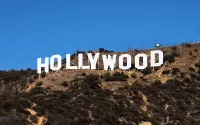
Los Angeles is the most populous city in California and...
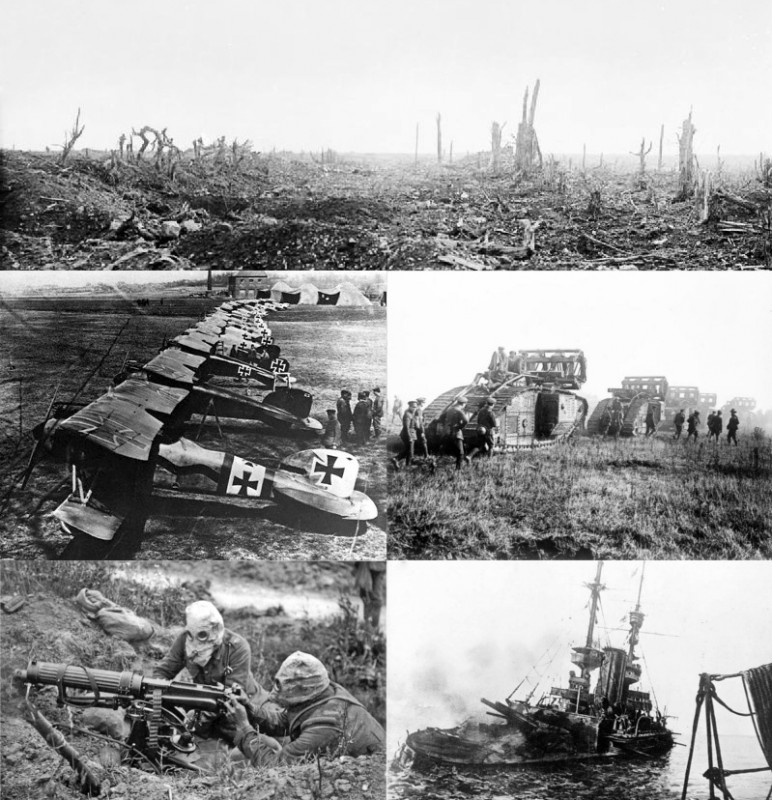
World War I a global conflict between the Allies and...
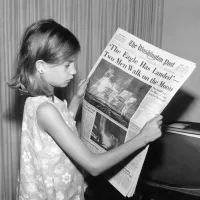
News encompasses information about current events disseminated through various media...

Seattle is the most populous city in Washington state and...
France officially the French Republic is a country primarily in...
Trending
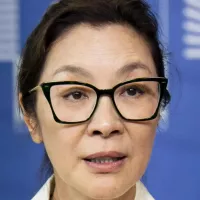
48 seconds ago Michelle Yeoh to Receive Honorary Golden Bear at Berlin Film Festival 2026
1 minute ago Nebraska Cornhuskers face Penn State: Game time set, odds analyzed for the upcoming game.

2 minutes ago Jake Paul to Fight Anthony Joshua on December 19: A Sensational Boxing Match
1 hour ago Trump defends Tucker Carlson's Nick Fuentes interview amid antisemitism concerns.
1 hour ago DHS immigration crackdown hits Charlotte, sparking protests and local confusion.
1 hour ago Gumayusi departs T1: Peyz expected to join as new AD Carry for LoL team.
Popular
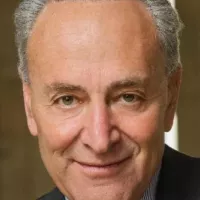
Chuck Schumer is the senior United States Senator from New...

XXXTentacion born Jahseh Dwayne Ricardo Onfroy was a controversial yet...

Bernie Sanders is a prominent American politician currently serving as...

Candace Owens is an American political commentator and author known...

Cristiano Ronaldo often nicknamed CR is a Portuguese professional footballer...
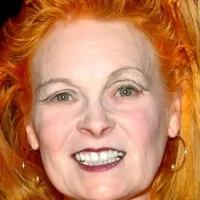
Vivienne Westwood was a highly influential English fashion designer and...
